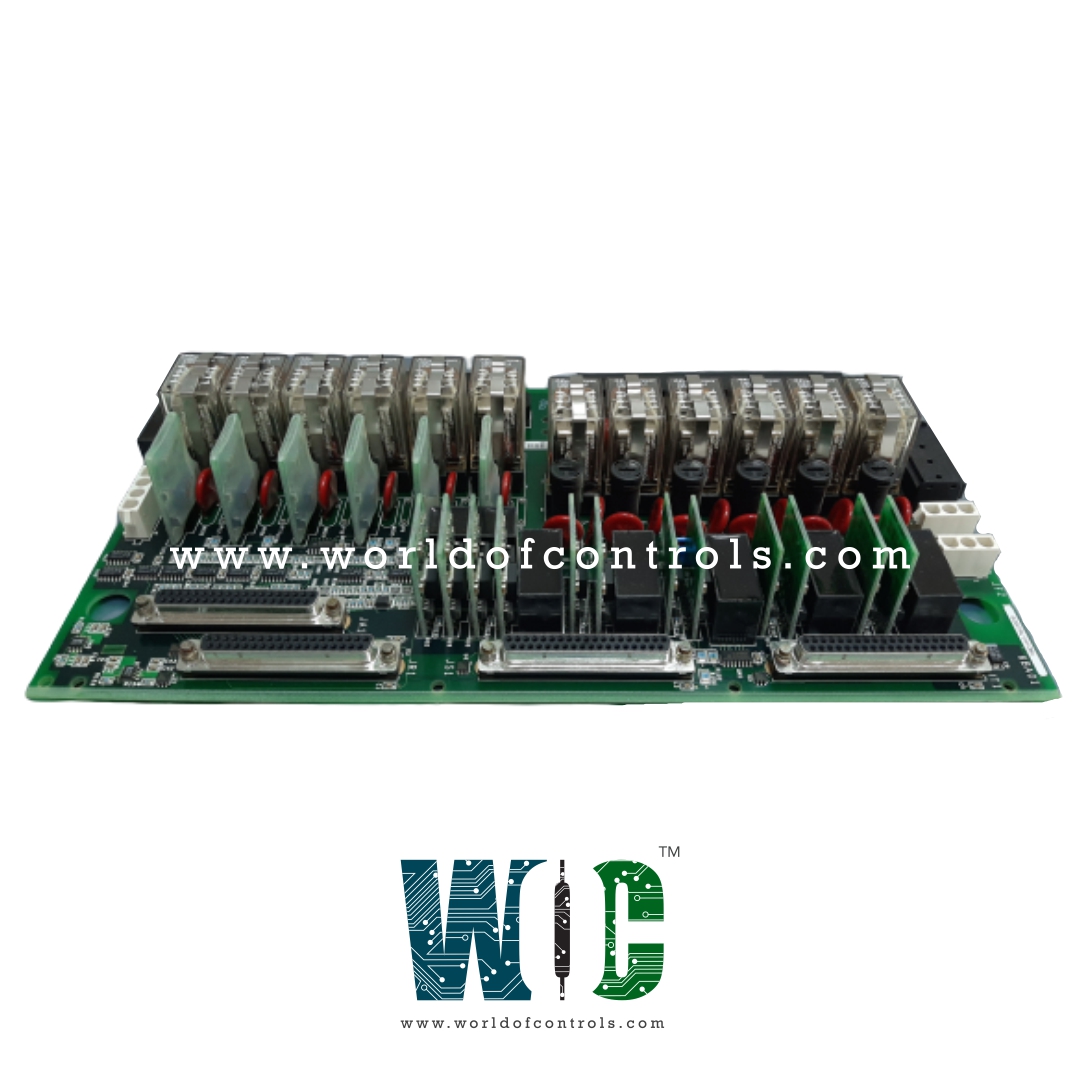
World Of Controls understands the criticality of your requirement and works towards reducing the lead time as much as possible.
IS200TRLYH2C - Relay Output with Contact Sensing Terminal Board is available in stock which ships the same day.
IS200TRLYH2C - Relay Output with Contact Sensing Terminal Board comes in UNUSED as well as REBUILT condition.
To avail our best deals for IS200TRLYH2C - Relay Output with Contact Sensing Terminal Board, contact us and we will get back to you within 24 hours.
SPECIFICATIONS:
Part Number: IS200TRLYH2C
Manufacturer: General Electric
Series: Mark VI
Number of relay channels: 12
Product Type: Relay Output with Contact Sensing Terminal Board
Operating System: QNX
Power Requirements: +5 V dc, 6 A
Power supply voltage: 24 V dc
Mounting: DIN-rail mounting
Technology: Surface mount
Operating temperature: 40 to 70°C
Size: 17.8 cm high x 33.02 cm
Repair: 3-7 Day
Availability: In Stock
Country of Origin: United States
Manual: GEH-6421V
FUNCTIONAL DESCRIPTION:
IS200TRLYH2C is a Relay Output with a Contact Sensing Terminal Board manufactured and designed by General Electric as part of the Mark VI Series used in GE Speedtronic Gas Turbine Control Systems. The Relay Output with contact sensing (TRLYH2C) terminal board holds 12 plug-in magnetic relays. The first six relay circuits are Form-C contact outputs to drive external solenoids. A standard 125 V dc or 115 V ac source with fuses and on-board suppression is provided for field solenoid power. TRLYH2C holds 12 plug-in magnetic relays. The first six relay circuits are Form-C contact outputs to drive external solenoids. A standard 24 V dc source with fuses and onboard suppression is provided for field solenoid power. The next five relays (7-11) are unpowered, isolated Form-C contacts. Output 12 is an isolated Form-C contact with a non-fused power supply, used for ignition transformers. For example, 12 NO contacts have jumpers to apply or remove the feedback voltage sensing. TRLYH1C and 2C are the same as the standard TRLYH1B board except for the following:
INSTALLATION:
Connect the wires for the 12 relay outputs directly to two I/O terminal blocks on the terminal board TRLYH2C Terminal Board Wiring. Each block is held down with two screws and has 24 terminals accepting up to #12 AWG wires. A shield terminal strip attached to the chassis ground is located immediately to the left of each terminal block. Connect the solenoid power for outputs 1-6 to JF1 normally. JF2 can be used to daisy-chain power to other TRLYs. Alternatively, power can be wired directly to TB3 when JF1/JF2 are not used. Connect power for the special solenoid, Output 12, to connector JG1.
OPERATION:
Relay drivers, fuses, and jumpers are mounted on the TRLYH2C. Relays 1-6 have a 250 V MOV for transient suppression between the NO and power return terminals. Relays are driven at the frame rate and have a 3.0 A ac rating. The typical time to operate is 10 ms. The relay outputs have a fail-safe feature that votes to de-energize the corresponding relay when a cable is unplugged or communication with the associated I/O board is lost. For simplex operation, a connector carries control signals and monitors feedback voltages between the I/O board and TRLY through JA1. For TMR applications, relay control signals are fanned into TRLY from the three I/O packs/boards R, S, and T through plugs JR1, JS1, and JT1. These signals are voted and the result controls the corresponding relay driver. The 28 V power for the relay coils comes in from all three I/O boards and is diode-shared. The following figure shows a TRLYH2C in a TMR system.
WOC has the largest stock of GE Speedtronic Control System Replacement Parts. We can also supply unused and rebuilt backed-up with a warranty. Our team of experts is available round the clock to support your OEM needs. Our team of experts at WOC is happy to assist you with any of your automation requirements. For pricing and availability on any parts and repairs, kindly get in touch with our team by phone or email.
What is a Relay Output with a Contact Sensing Terminal Board?
A relay output with a contact sensing terminal board is a device that combines relay outputs with the ability to monitor the state (open or closed) of the contacts connected to the relay.
What are the typical applications of such a device?
These devices are commonly used in automation and control systems where there's a need to not only control electrical loads (like motors, lights, or heaters) but also monitor the status of external switches or sensors.
What are the benefits of using a relay output with a contact-sensing terminal board?
They provide a compact solution for both controlling and monitoring circuits. They can simplify wiring and reduce the need for additional components.